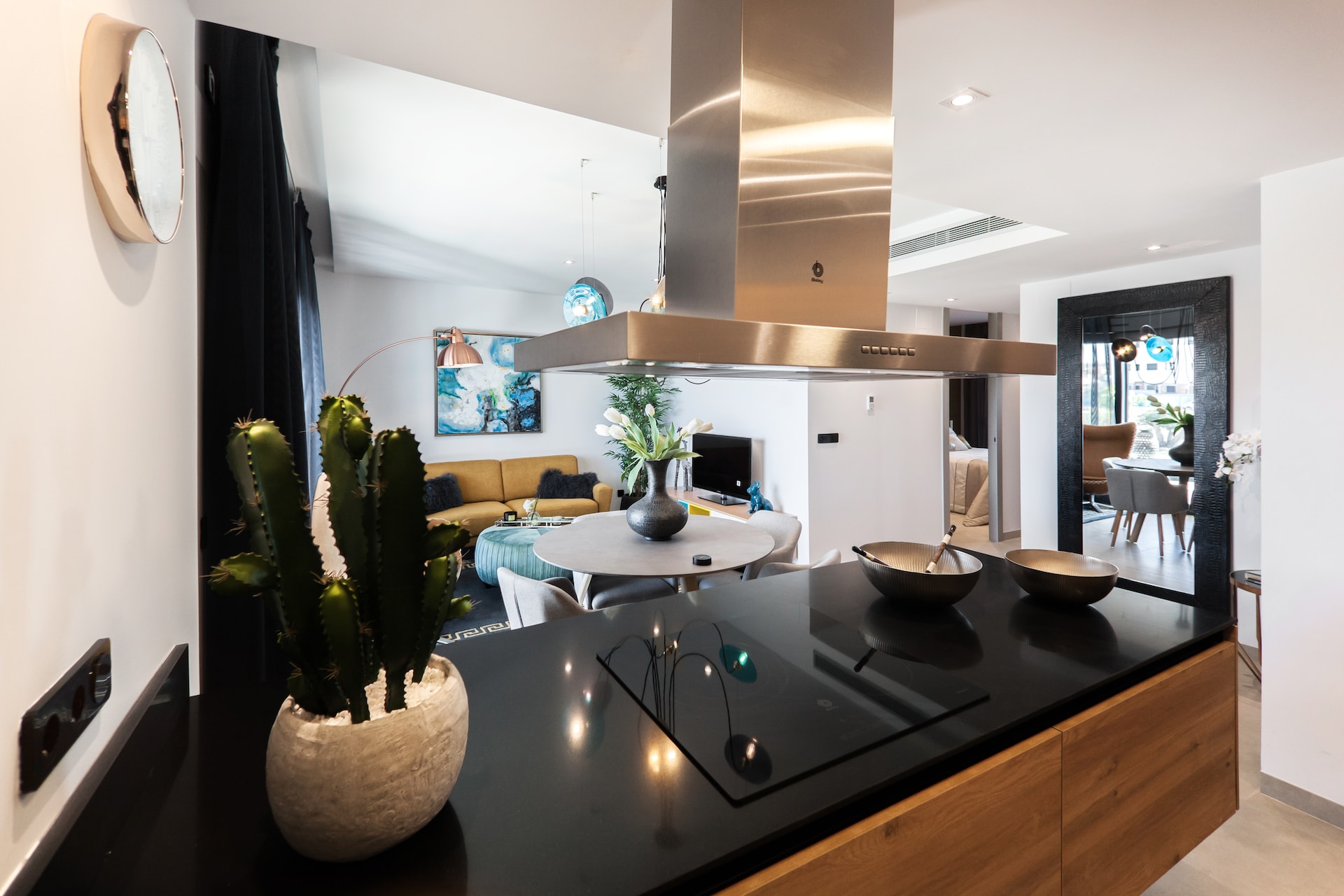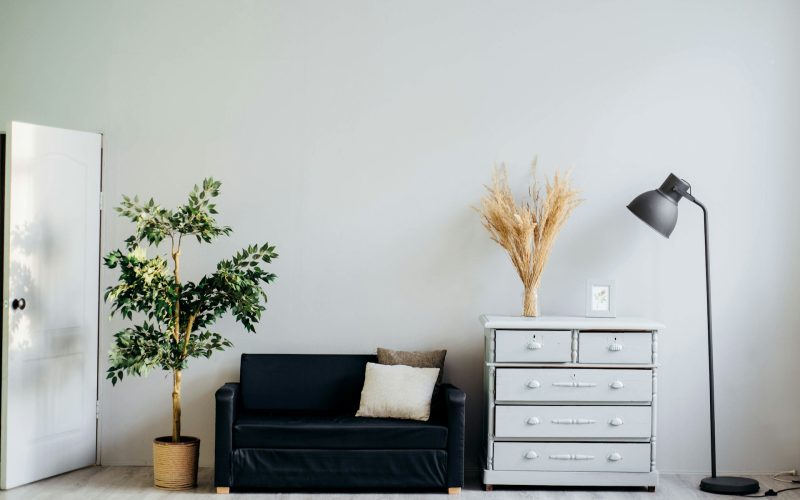From clever storage solutions to simple room dividers, these home renovation ideas will help you make the most of your small space. Whether your home is cramped or cozy, you can add value to your home with these smart design tricks.
Doorways chomp up valuable square footage opening and closing, but a sliding barn door offers a pretty solution. Choose one with details that complement the accents in your room.
1. Install Sliding Barn Doors
Sliding barn doors give you the option to separate rooms when needed, but also let you keep your floor plan open for larger gatherings. Plus, they’re easy to maneuver for young children and busy adults.
Choose a door panel in a material that complements your decor. Options range from reclaimed wood to new raw materials, giving you the flexibility to find a style that suits your personality.
Choose the right hardware to support your barn door. You’ll want sturdy, high-quality hardware that performs flawlessly and looks beautiful. Precise sizing is important to ensure a perfect fit and minimize gaps between the wall and door.
2. Lofted Bedroom
Loft bedrooms get a bad rap as being either juvenile or perilous for tall people, but when done right, they can actually be quite chic. This studio home uses a mezzanine bedroom to create a cozy reading nook and extra workspace.
Instead of adding a full wall to divide the lofted bedroom from the living area, this loft used a glass barrier to bifurcate the room. This allows the bed to remain prominent, and it also makes the stairwell feel more integrated into the design.
If you have a lofted bedroom in your small space, consider adding a futon or a large bean bag to create a cozy lounging space. This multifunctional interior design idea is perfect for studio apartments and tiny homes.
3. Create a Cozy Seating Area
Make your compact living room a cozy escape with a seating area that invites conversation and relaxation. Use a banquette to fill the space where a chair might otherwise sit, and encourage family members and friends to gather there for coffee, movie nights, or game days.
Layering rugs, blankets, and pillows with warm-colored accents is another easy way to make small spaces feel cozy. Warm-colored paint can also make rooms feel cozier, but be sure to balance it with low lighting for a well-lit, cozy look.
To maximize the visual lightness of a tight room, opt for sofas and loveseats that are up on legs rather than pushed against the wall. Heavily textured fabrics like sherpa and faux fur are great choices for cozy seating areas, too. Choosing a color that coordinates with your walls adds a cohesive look.
4. Open Up the Space
When you live in a small space, it’s easy to get weighed down with furniture and decor that doesn’t serve any real purpose. This clutter can also impede sleep patterns, cause headaches and allergies and prevent natural light from filtering in.
Removing unnecessary items can open up the space and help you feel more rested. Plus, a clean environment is healthier and more welcoming to guests.
If you live in an open-floor plan, strategically positioning your furniture to create cordoned intimate areas can make the room look bigger than it is. It’s especially effective if you can do this without tearing down walls. Try turning the backs of sofas and chairs to separate spaces and adding rugs that define boundaries without taking up floor space. This can make an immense difference in how large your home feels.
5. Create a Cozy Reading Nook
Though true book lovers can read anywhere, there’s something special about curling up in a cozy reading nook. Whether it’s a comfy chair in the corner of your bedroom, a built-in window seat in a sunroom, or a daybed in a converted hallway, creating a personal space is an easy way to make reading more fun.
The right books and cozy pillows are essential to a good reading nook, but it’s also important to consider the surrounding area. If you’re in a high-traffic area, add room dividers to block out noise and interruptions. If you tend to reference or re-read books often, consider organizing your shelves by topic or author.
You can even create a cozy reading nook in a small space like this hallway by adding large floor cushions and a bookshelf. Floating shelves are a great option because they keep the shelf out of sight and don’t take up much space.
6. Add Decorative Room Dividers

Room dividers can be functional and stylish, and are a great way to demarcate open-plan living areas without adding walls. Simple wood slats allow light to pass through, and can be adjusted based on privacy needs. For example, this rattan screen room divider in a bohemian bedroom lets plenty of natural sunlight come through while still giving guests a glimpse into the kitchen and dining area. You can click here if you ever need to detect any lead while remodeling your house for things such as paint.
A curtain is another cost-effective and renter-friendly option. Designer Megan Hopp hung two mustard velvet curtains across the entryway to her railroad apartment for a flexible solution that blocks light and provides privacy when needed.
If you have a little more space to work with, a bookshelf or cabinet can double as a room divider. Here, an angled bookcase and lush green plant creates a visual distinction between the living room and kitchen while keeping both spaces cozier and more organized.
7. Turn a Reach-In Closet into a Laundry Room
Imagine a space where you can do all your laundry in one room. A closet with a washing machine and dryer tucked inside is an easy way to turn a tiny footprint into a one-stop laundry station. Add a drying rack, custom hampers and bins, a table for folding clothes and even a pull-out ironing board to create a stylish and efficient laundry area.
Since a laundry room is usually hidden, it’s a good place to use bolder design elements you may be reluctant to try elsewhere. Paint colors and patterned tile can make chores more enjoyable, while coordinating storage solutions can keep everything looking neat and tidy.
8. Build Floor-to-Ceiling Cabinets in Your Kitchen
When you have floor-to-ceiling cabinets, it’s easy to keep your kitchen organized and clean. This type of cabinetry works well in smaller kitchens because it draws the eye upward and makes the room feel larger. If you’re worried about having to reach up high for items, opt for a more narrow cabinet that has a recessed shelf on the inside of it, which can hold a basket full of cleaning supplies or pantry items.
If you’re planning to remodel your kitchen, consider removing non-load-bearing walls to create an open floor plan. This can make the room feel bigger and brighter, plus it will give you more space to work with. You can also use these areas to add creative storage solutions, like a coffee nook or appliance camouflage. The right design will ensure that you get the most out of your space.
9. Add a Mirror
A mirror can make a small space feel bigger if it’s placed in the right spot. A mirrored coffee table, like this Coylin cocktail table by Ashley Furniture, is the perfect way to make your room feel bigger while adding an elegant touch.
Alternatively, place an oversized mirror above your fireplace to instantly make your room feel larger. The oversized mirror is a great focal point and it can be accentuated by adding sconces on either side of the mirror to really drive the bigger space illusion home.
If a full-length mirror is too much for your wall, consider hanging strips of them instead. This optical illusion trick makes it hard to tell where the real room ends and the reflected one begins, creating an airy look. You can add a chic touch by leaning framed artwork in matching frames against the mirror strips.
10. Create a Cozy Reading Nook
A cozy reading nook can be any book lover’s dream. In this charming nook by the fireplace, an ivory lounge chair with a footstool and throw pillow create a seating area that feels separate from the rest of the room while maintaining a unified color scheme. Two different-sized white picture ledge shelves display a collection of books and keep reading materials easily accessible.
If a shelf-lined home library isn’t an option, create a cozy reading nook in a hallway or an unused closet. This nook features a pine day bed covered in vintage embroidered pillows and positioned near built-in shelving to create a relaxing escape for afternoons spent in the pages of a novel. Layer a couple of plush floor cushions for extra seating and an inviting boho aesthetic. Add a table for a lamp or to hold drinks and other decor.

